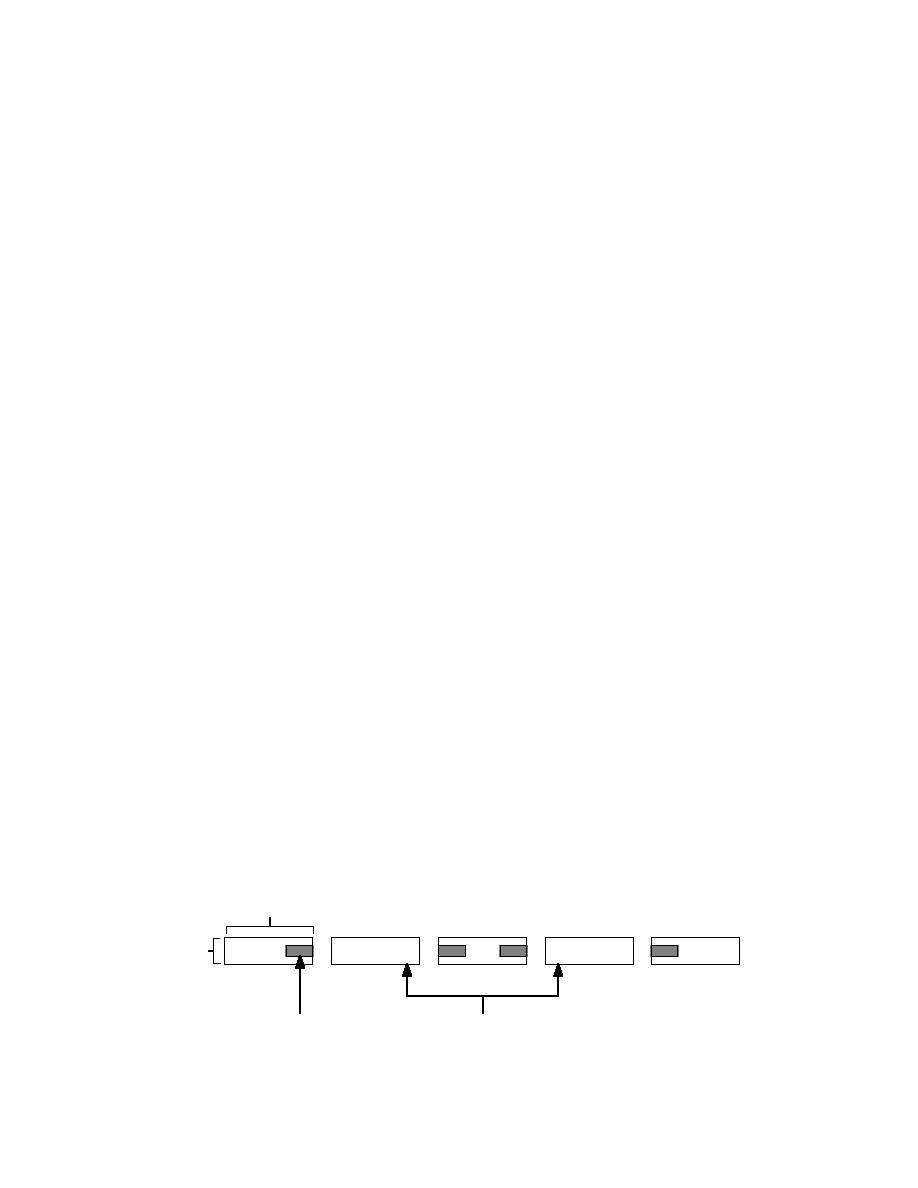
to the center of each soil core using a glass syringe
ing that was held in place with plastic end caps.
after a pilot hole had been made. Immediately af-
Two subsamples were taken from the third core
ter each spiking, the same wrapping used to cover
barrel liner, one from each end, using the proce-
the bottom was used to cover the top. Two time
dure described for the first section. The fourth core
zero ("D0,") control samples were prepared by
barrel liner was wrapped in the same fashion as
placing an entire core barrel liner into a 2-oz (60
the second liner. Lastly, a subsample was taken
mL) wide-mouth VOA bottle, spiking with 1.00
from the bottom of the fifth core barrel liner. This
mL of the aqueous solution, and then immediately
sequence of sampling and wrapping core barrel
adding 50 mL of MeOH and capping. The cov-
liners was performed on three separate locations.
ered core liners were placed in a refrigerator (4
The wrapped samples were immediately refrig-
2C) and duplicates of each of the four different
erated (4 2C), and one core barrel liner from
wrapping configurations were removed after 2
each of the three sets was removed after two and
and 6 days of storage. After storage coverings were
four days of storage and subsamples were re-
removed, and each core barrel liner was placed in
moved from both ends. The subsamples were re-
a 2-oz (60-mL) VOA bottle and 50 mL of MeOH
moved following the description given earlier for
was added as with the controls.
core barrel liners and prepared for analysis follow-
ing the same procedures that had been used in the
field.
Field experiment
Five brass core barrel liners (2.5 cm o.d. 8.6 cm
En Core samplers
long) were filled with soil after being placed end-
on-end inside of a Mostap sampler that was then
Laboratory experiment
pushed into a contaminated formation by a cone
Twenty 5-g En Core samplers were filled with
penetrometer truck. After extraction, the core bar-
relatively clean soil one at a time by pushing them
rel liners were removed from the barrel of the
into an undisturbed surface created by removing
Mostap sampler one at a time, so that the bottom
the first 28 cm. After each sampler was filled, a
of the soil core was available first. When the first
pilot hole was made into the middle of the soil
plug using a 21-gauge needle. Using a 50-L glass
core barrel liner section, and sequentially the fol-
syringe (22-gauge needle), we added 50-L of a
lowing sections, cleared the outer barrel, a flat-
bladed knife was used to make a smooth cross-
dilute aqueous solution of the same nine analytes
sectional cut between the two rings. In the field, a
cited previously. After spiking each En Core sam-
subsample (≈5 g) was removed from the top of
pler was capped and enclosed in a foil resealable
the first core liner with a 5-mL modified syringe.
bag.
This subsample was placed immediately into a 22-
In the laboratory, five of the En Core samplers,
mL VOA vial containing 10 mL of water and
distributed from near the beginning to the end of
capped, to establish the D0 values (Fig. 5). The
the field collection and treatment process, were
ends of the second core barrel liner were wiped
opened one at a time and the contents were ex-
clean, then thin metal disks (same diameter as the
truded into weighed 40-mL VOA vials containing
core barrel liner) were placed over the ends and
5 mL of MeOH. These samples were used to es-
wrapped with translucent, nonelastic Teflon sheet-
tablish the D0 concentration. The remaining En
Arrangement of Core Barrel Liners as Positioned in Mostap Sampler
8.6 cm
2.5 cm
1st
2nd
3rd
4th
5th
Bottom
Top
Sample
Core barrels wrapped
and stored at 4C
removed
for DO value
Figure 5. In-field sampling and storage preparation of metal core barrel liners.
7



 Previous Page
Previous Page
